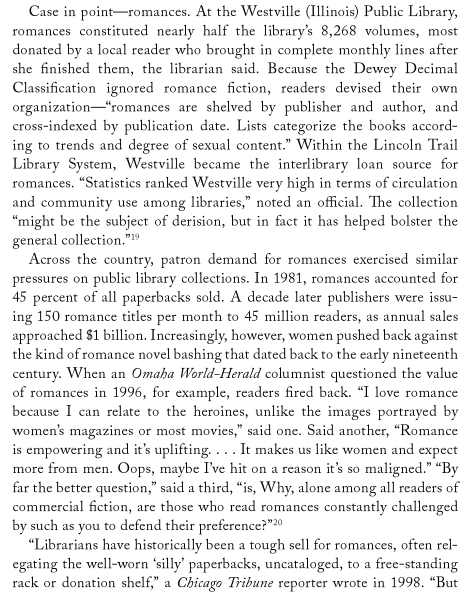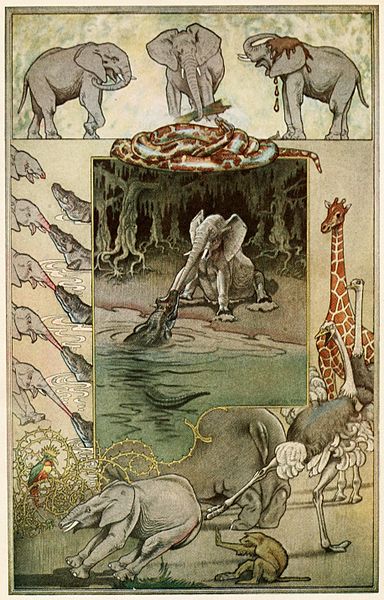Effects of Written Erotica
A recent piece of research in The Journal of Sex Research, in which a group of male and female readers were exposed to three different types of erotica (male dominant/female submissive; female dominant/male submissive; neither partner submissive or dominant), suggests that:
reading about a sexually submissive woman may have a negative impact on attitudes toward women, including increasing benevolent sexism in women and rape myth acceptance in men. However, erotica also had the power to challenge traditional gender roles. We found that after reading about a sexually dominant woman, men rated dominance as an appealing trait in a potential partner, at least to the same extent that women did. Finally, we found that men and women were similar in their levels of arousal in response to sexually explicit erotica and that different types of erotica are equally arousing, regardless of the dominance and submission roles taken on by the protagonists. In sum, although we highlight some potentially negative consequences of reading erotica depicting male dominance, our findings should not be interpreted as devaluing erotica. Instead, our study hints at the utility and benefit of seeking out a range of erotica that eschews typical gender roles to encourage “eroticizing equality.” (10)
The authors did advise that:
It should be noted that the effects of reading different submission/dominance stories on attitudes were small. We speculate that the potential consequences of reading male dominance erotica on attitudes, such as more negative views toward women, may be exacerbated following repeated exposure to such erotica. Future research might investigate the effects of a longer-term exposure to submission-/dominance-themed erotica by using a diary study to test the effects of reading a full-length erotic novel, or longitudinal work testing male dominance erotica consumption and attitudes over time. Finally, an additional avenue for future research would be to test the effects of reading popular erotica in a nonheterosexual sample. For example, submission and dominance between a consenting lesbian pair would be unlikely to carry with it the same political meaning as male-on-female dominance. It is possible, however, that effects may still be seen on partner preferences. (10)
Here's a bit more detail about their findings regarding the dominant woman/submissive male and neither-partner-dominant-nor-submissive erotica:
It may be that depictions of nontraditional men and women as “sexy” broaden our understanding of what is considered gender appropriate behavior. The battle for less prescriptive gender roles is often fought directly. Our work highlights that change can also occur indirectly via the stories that we tell, including those that sexually arouse us. While erotica has the potential to result in detrimental outcomes for women (i.e., through increased benevolent sexism and rape myths), it also has the potential to make the deviant desirable and prompt a shift toward acceptance of nontraditional gender roles. Although the shifts observed in our study were small and likely to be temporary, more consistent exposure to nonnormative erotica (or even literature more generally) may have a stronger impact on what men and women want in a partner. (9)
and
Our findings provide promising evidence that a focus away from female submission does not mean a decrease in sexual arousal. Rather, stories describing female dominance or no dominance were equally arousing and perhaps less likely to perpetuate the belief in women that sex and submission are necessarily linked. (9)
----
Harris, Emily Ann, Michael Thai & Fiona Kate Barlow (2016). "Fifty Shades Flipped: Effects of Reading Erotica Depicting a Sexually Dominant Woman Compared to a Sexually Dominant Man", The Journal of Sex Research.

 I'm probably not doing a very good job of trying to capture the essence of many of these essays, given how little I know about the texts they discuss. At a minimum, I hope I'm giving enough quotes to let people know if an essay is on a topic which interests them.
I'm probably not doing a very good job of trying to capture the essence of many of these essays, given how little I know about the texts they discuss. At a minimum, I hope I'm giving enough quotes to let people know if an essay is on a topic which interests them.

